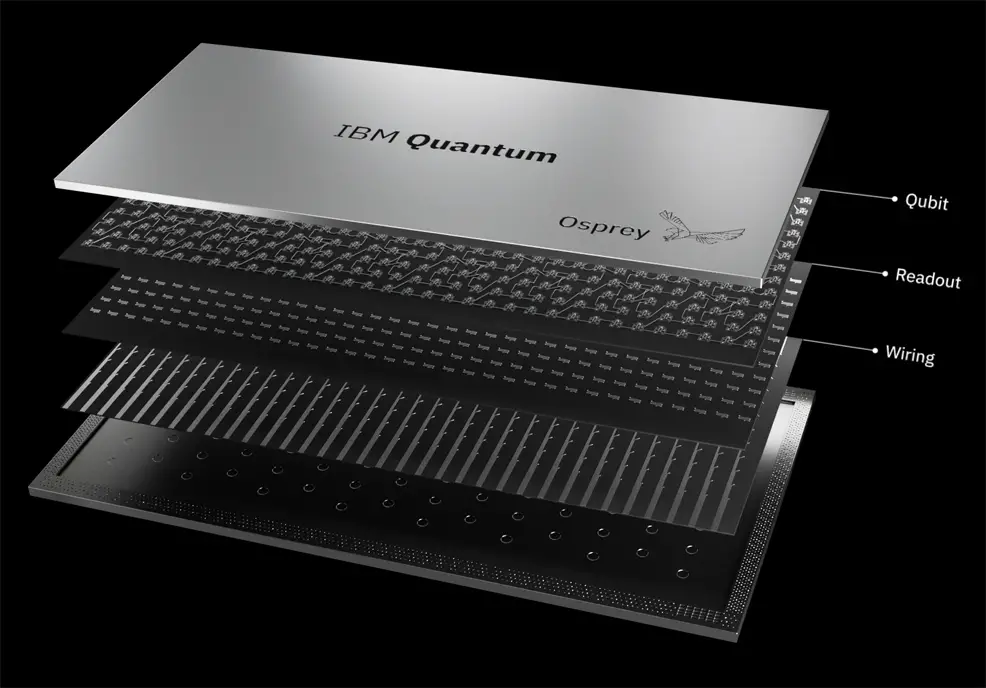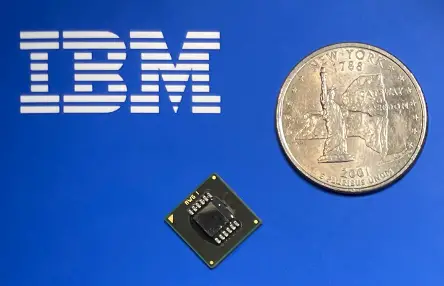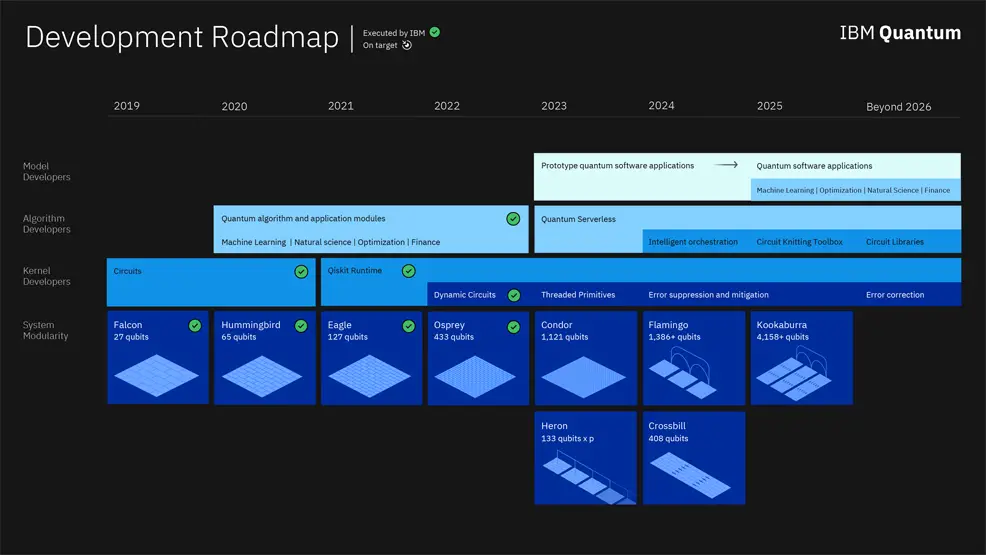
10th November 2022 433-qubit quantum processor revealed IBM has unveiled 'Osprey', the successor to its Eagle system, featuring the highest ever qubit count for a quantum processor.
The IBM Quantum Summit 2022 kicked off yesterday with announcements of new breakthrough technologies in quantum hardware and software, as the company outlined its pioneering vision for quantum-centric supercomputing. The annual event showcases IBM's broad ecosystem of clients, partners and developers and their continued progress to bring useful quantum computing to the world. During the Summit, held in New York, the company unveiled the following new developments.
Osprey – IBM's new 433-qubit (quantum bit) processor 'Osprey' has, by far, the largest qubit count of any quantum processor in the world, more than tripling the 127 quantum bits of the Eagle processor unveiled in November 2021. This has the potential to run complex quantum computations far beyond the capability of any classical computer. For reference, the number of classical bits that would be necessary to represent a state on the IBM Osprey processor exceeds the total number of atoms in the universe. "The new 433 qubit 'Osprey' processor brings us a step closer to the point where quantum computers will be used to tackle previously unsolvable problems," said Dr. Darío Gil, Senior Vice President and Director of Research at IBM. "We are continuously scaling up and advancing our quantum technology across hardware, software and classical integration to meet the biggest challenges of our time, in conjunction with our partners and clients worldwide. This work will prove foundational for the coming era of quantum-centric supercomputing." (Note: Another company, D-Wave Systems, has previously announced quantum computers featuring thousands of qubits. However, these rely on a technique called quantum annealing with high error rates and are generally not accepted by researchers as true "universal" quantum computers.) Quantum System Two – IBM's next-generation quantum system IBM intends to scale up towards 4,000+ qubits by 2025, and eventually 1 million qubits. Achieving this will require a new system architecture that goes beyond the current capabilities of existing physical electronics. The company provided details of IBM Quantum System Two, which is designed to be modular and flexible, combining multiple processors into a single system with communication links. It will be a building block of quantum-centric supercomputing – the next wave in quantum computing, greatly increasing computational capacity and employing hybrid cloud middleware to seamlessly integrate quantum and classical workflows. A fully operational Quantum System Two will be demonstrated at next year's Summit.
A new CMOS qubit controller In addition to improved modularity, IBM is aiming to scale in a cost-efficient way. The company is developing a new cryo-CMOS device to control up to four qubits from inside the fridge using a chip the size of a fingernail. This will reduce line density and latency even further.
Client and ecosystem expansion IBM announced that German conglomerate Bosch has joined the IBM Quantum Network to explore a variety of quantum use cases. Other recent additions to the network include multinational telco Vodafone to explore quantum computing and quantum-safe cryptography, French bank Crédit Mutuel Alliance Fédérale to explore use cases in financial services, and Swiss innovation campus uptownBasel to boost skill development and promote leading innovation projects on quantum and high-performance computing technology. These organisations are joining more than 200 others – and more than 450,000 users – with access to the world's largest fleet of more than 20 quantum computers accessible over the cloud.
"The IBM Quantum Summit 2022 marks a pivotal moment in the evolution of the global quantum computing sector, as we advance along our quantum roadmap. As we continue to increase the scale of quantum systems and make them simpler to use, we will continue to see adoption and growth of the quantum industry," said Jay Gambetta, IBM Fellow, and VP of IBM Quantum. "Our breakthroughs define the next wave in quantum, which we call quantum-centric supercomputing, where modularity, communication, and middleware will contribute to enhanced scaling computation capacity and integration of quantum and classical workflows."
Comments »
If you enjoyed this article, please consider sharing it:
|









